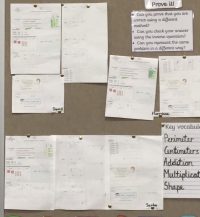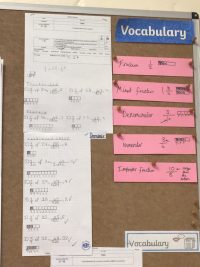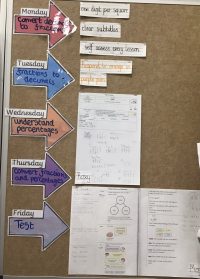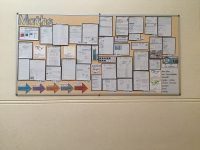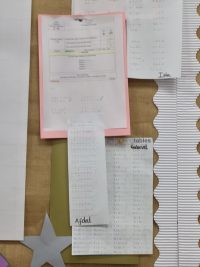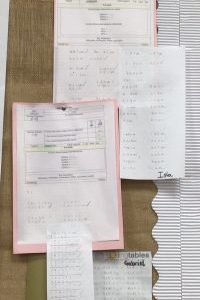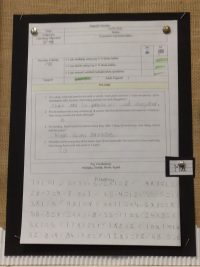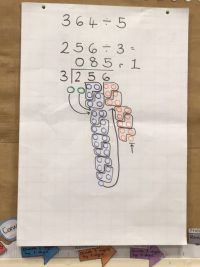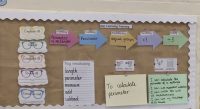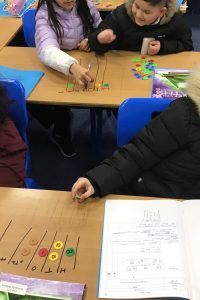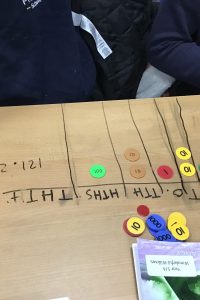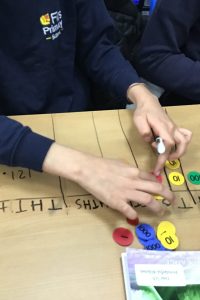Last Updated: September 2024
Maths
As a school we have decided to follow White Rose Maths. The White Rose schemes of learning are designed to support a mastery approach to teaching and learning, as well as to support the aims and objectives of the National Curriculum.
The White Rose schemes have number at the heart and a lot of time is spent reinforcing number to build competency. It also provides opportunities to build reasoning and problem solving into each lesson.
White Rose believes that all children, who are introduced to a concept, should have the opportunity to build on their abilities by following a concrete-pictorial-abstract approach.
Concrete – children should have the opportunity to use concrete objects to help them understand what they are doing.
Pictorial – alongside this children should use pictorial representations. These representations can then be used to help reason and solve problems.
Abstract – both concrete and pictorial representations should support children’s understanding of abstract methods.
At Firs, we understand the fluency and quick mental recall of mathematical facts is the basis of children being able to succeed in their maths lessons. We prioritise the practising of these skills using “Tackling Tables” and “Tackling Add and Subtract.”
Tackling Tables and Tackling Add and Subtract is used throughout the school to help children develop key number skills. It is an interactive, team game where children work in groups of 2 or three to test each other on multiplication and division or addition and subtraction facts. For both sets there are three different levels and children are baselined and tested to progress through the levels.
Tackling Timestables: Blue (1, 2, 5, 10), Green (3, 4, 8) and Red (all others).
Tackling Add & Subtract: Purple (number bonds, doubles and near doubles), Yellow (number bonds, multiples of 10 and addition of double and single digit), Orange (addition of two double digit numbers and double digit number bonds).
Tackling Timestables is used in year 2 and throughout KS2. Tackling Add and Subtract is used throughout KS1. It is also used as an intervention by adults to help fill the gaps in learning for pupils.
Click here for more information about “Tackling Tables” and “Tackling Add and Subtract.”
All children have a login for “My Maths.” This is used in a variety of ways across the school: to give the children an opportunity to practise their fluency and mental recall skills through the games; completing tasks in school that follow up what they have been learning; and set activities for home learning.
Children have the opportunity to go on “My Maths” both at home and at school.
At Firs, we follow the order White Rose Maths and use the small steps to help us build up to age related objectives. Maths classes are taught in ability groups. In KS2 maths is taught in mixed age group classes. During these maths lessons, the class teacher is aware of the different expectations of the different year groups (such as in Number and Place Value, Year 3: compare and order numbers up to 1,000 and Year 4: order and compare numbers beyond 1,000). The guidance for these mixed aged classes can be found at the bottom of the page.
At Firs, we are passionate about ensuring that the learning is at the correct level for the child and allows the child to move at their own pace but always be challenged. This allows for all children to ensure they are secure in a method/concept before moving on. We ensure that all children have the opportunity to apply new methods/concepts learnt through problem solving and reasoning. Our maths lesson structure can be seen below.
What Maths Looks Like June 2021Although we follow the White Rose Maths progressive curriculum and use the ‘Small Steps’ to plan and support the sequencing of our own lessons, we recognise that due to the diverse needs of our pupils including SEND, disadvantaged, EAL, New to English or gaps in their schooling, we may need to adjust the order of our curriculum within one National Curriculum year to ensure learning in maths can be successful. As our transience and needs of the pupils adjusts dramatically each year, adjustments also alter year on year. As maths co-ordinators we record, track and monitor and curriculum adjustments to ensure coverage of the whole curriculum.
For our pupils who have gaps in their learning and/or pupils who need to make rapid progress, interventions (see Number Stacks link at the bottom of the page) may be given in addition to every day maths lessons. These interventions prioritise initially the concepts of Place Value and the Four Operations as these areas are vital in ensuring the entirety of the maths curriculum can be accessed and the skills and knowledge applied to other learning objectives.
At Firs, we continued to teach our curriculum with some adaptations during National Lockdown. For pupils at school, the maths curriculum at school was taught as normal. For pupils at home, adaptations were made where children wouldn’t have the resources at home that would be used in school. However, the adaptions that were made, still allowed children to achieve the same learning objective as those in school, just in a different way. As well as adaptations to the task/resources, pupils’ may have been taught maths through online zoom lessons, pre-recorded videos by the teacher (such as on loom), or links to online videos (such as National Oak Academy or BBC Bitesize). More information about our teaching and learning during lockdown can be found on our “Whole School Remote Learning Plan” Click here
We have maths displayed all around our school: in our classrooms and in our halls. We use our maths walls in the classroom to celebrate work and model learning for during the lesson. These are referred back to every lesson and in following lessons when discussing our prior learning. Children are also encouraged to use the working walls as part of our “5Bs” for independent learning. We try to use concrete examples where possible to support our children in their learning. As part of mastery maths and the White Rose curriculum, children are exposed to a Concrete – Pictorial – Abstract progression of learning throughout a set of lessons or across year groups.
Click on the grey buttons below to be taken to each key document.
© Copyright 2025 Firs Primary School
Part of the Derby Diocesan Academy Trust (DDAT) family of schools
Registered Address: Unit 3 Top Floor Endcliffe Mount, Deepdale Business Park, Ashford Road, Bakewell, Derbyshire. DE45 1GT
Tel: 0333 3554353, Email: info@ddat.org.uk

